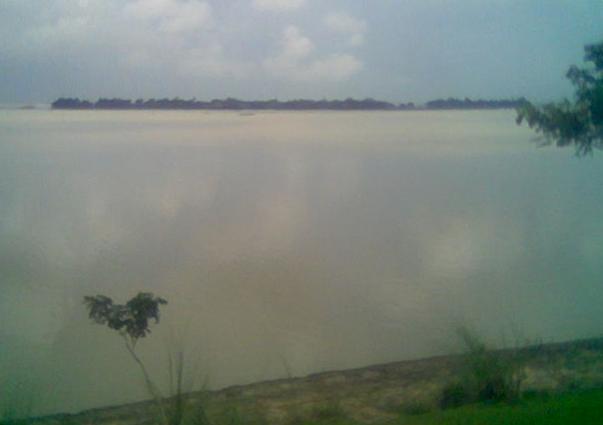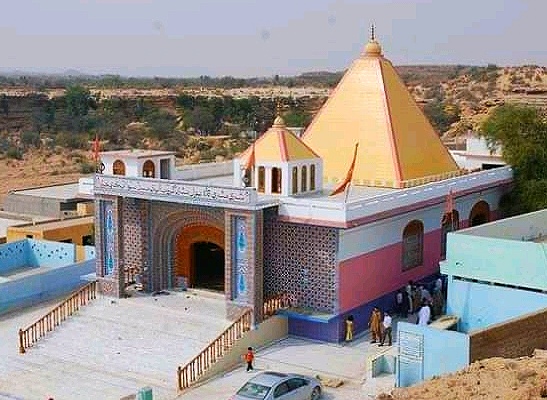|
Divisions Of Pakistan
The Administrative units of Pakistan, four provinces, capital territory and two autonomous territories of Pakistan are subdivided into 38 administrative "divisions", which are further subdivided into Districts of Pakistan, districts, tehsils and finally Union councils of Pakistan, union councils. These divisions were abolished in 2000, but restored in 2008. The divisions do not include the Islamabad Capital Territory or the Federally Administered Tribal Areas, which were counted at the same level as provinces, but in 2018, the Federally Administered Tribal Areas were subsumed into Khyber Pakhtunkhwa Province and allocated to neighbouring divisions therein. History Administrative divisions had formed an integral tier of government from colonial times. The Governor's provinces of British India were subdivided into divisions, which were themselves subdivided into districts. At independence in 1947, the new nation of Pakistan comprised two wings – eastern and western, separated by ... [...More Info...] [...Related Items...] OR: [Wikipedia] [Google] [Baidu] |
Rajshahi Division
Rajshahi Division ( bn, রাজশাহী বিভাগ) is one of the eight first-level administrative divisions of Bangladesh. It has an area of and a population at the 2011 Census of 18,484,858. Rajshahi Division consists of 8 districts, 70 Upazilas (the next lower administrative tier) and 1,092 Unions (the lowest administrative tier). The region has historically been dominated by various feudal Rajas, Maharajas and Zamindars. Formerly comprising 16 districts, a new division (Rangpur Division) was formed with the 8 northern districts of the old Rajshahi Division from early 2010. Etymology and names The Rajshahi Division is named after Rajshahi District. Dominated by various feudal Rajas, Maharajas and Zamindars of mixed origins throughout history, the name is a compound of the words ''Raj'' and ''Shahi'', both of which can be translated into reign or kingdom. Archaic spellings in the English language also included ''Rajeshae''. The capital city of the division was for ... [...More Info...] [...Related Items...] OR: [Wikipedia] [Google] [Baidu] |
West Pakistan
West Pakistan ( ur, , translit=Mag̱ẖribī Pākistān, ; bn, পশ্চিম পাকিস্তান, translit=Pôścim Pakistan) was one of the two Provincial exclaves created during the One Unit Scheme in 1955 in Pakistan. It was dissolved to form 4 provinces in 1970 before 1970 General Elections under the 1970 Legal Framework Order. Following its independence from British rule, the new Dominion of Pakistan was physically separated into two exclaves, with the western and eastern wings geographically separated from each other by India. The western wing of Pakistan comprised three governor's provinces (the North-West Frontier, West Punjab and Sind), one chief commissioner's province ( Baluchistan) along with the Baluchistan States Union, several independent princely states (notably Bahawalpur, Chitral, Dir, Hunza, Khairpur and Swat), the Karachi Federal Capital Territory, and the autonomous tribal areas adjoining the North-West Frontier Province. The eastern ... [...More Info...] [...Related Items...] OR: [Wikipedia] [Google] [Baidu] |
East Pakistan
East Pakistan was a Pakistani province established in 1955 by the One Unit Scheme, One Unit Policy, renaming the province as such from East Bengal, which, in modern times, is split between India and Bangladesh. Its land borders were with India and Myanmar, with a coastline on the Bay of Bengal. East Pakistanis were popularly known as "Pakistani Bengalis"; to distinguish this region from India's state West Bengal (which is also known as "Indian Bengal"), East Pakistan was known as "Pakistani Bengal". In 1971, East Pakistan became the newly independent state Bangladesh, which means "country of Bengal" in Bengali. East Pakistan was renamed from East Bengal by the One Unit Scheme of Pakistani Prime Minister Mohammad Ali of Bogra. The Constitution of Pakistan of 1956 replaced the Pakistani monarchy with an Islamic republic. Bengali politician H. S. Suhrawardy served as the Prime Minister of Pakistan between 1956 and 1957 and a Bengali bureaucrat Iskander Mirza became the first Presid ... [...More Info...] [...Related Items...] OR: [Wikipedia] [Google] [Baidu] |
One Unit
The One Unit Scheme ( ur, ; bn, এক ইউনিট ব্যবস্থা) was a geopolitical programme launched by the Government of Pakistan led by Prime Minister Muhammad Ali Bogra on 22 November 1954 and passed on 30 September 1955. The government claimed that the programme would overcome the difficulty of administering the two unequal polities of West and East Pakistan separated from each other by more than a thousand miles. To diminish the differences between the two regions, the 'One Unit' programme merged the four provinces of West Pakistan (West Punjab, Sind, NWFP & Baluchistan) into a single province to parallel the province of East Pakistan (now Bangladesh). Pakistani scholars and researchers maintain that the One Unit programme was viewed as a counterbalance against the political and population domination of the ethnic Bengali population of East Pakistan. The One Unit program was met with great resistance and grievances were raised by the four provinces sin ... [...More Info...] [...Related Items...] OR: [Wikipedia] [Google] [Baidu] |
Hyderabad Division
Hyderabad Division ( sd, حيدرآباد ڊويزن) is an administrative division of the Sindh Province of Pakistan. It was abolished in 2000 but restored again on 11 July 2011. Hyderabad, Sindh, Hyderabad is the divisional headquarters of Hyderabad Division. Following the separation of the Badin, Sujawal and Thatta Districts out of Hyderabad Division to form the new Banbhore Division, the residual Hyderabad Division now comprises six districts: Districts History During British Raj, colonial rule, the erstwhile division was a district of Sind in what was then the Bombay Presidency of British India. The population of the district increased by 47% between 1872 and 1901. The total population according to the census were 677,994 in 1872, 703,637 in 1881, 861,994 in 1891 and 989,030 in 1901. After independence in 1947 the district became a division until its dissolution in 2000, the division comprised the districts of Badin District, Badin, Hyderabad District, Pakistan ... [...More Info...] [...Related Items...] OR: [Wikipedia] [Google] [Baidu] |
Sind Province (1936–1955)
Sind (sometimes called Scinde, ) was a province of British India from 1st April 1936 to 1947 and Dominion of Pakistan from 14 August 1947 to 14 October 1955. Under the British, it encompassed the current territorial limits excluding the princely state of Khairpur. Its capital was Karachi. After Pakistan's creation, the province lost the city of Karachi, as it became the capital of the newly created country. It became part of West Pakistan upon the creation of the One Unit Scheme. Administrative divisions On 1st April 1936 Sind division was separated from Bombay Presidency and established as a province. At that time the Province's Admistration division are listed below: Location The province was bordered by Karachi (within the Federal Capital Territory after 1948) and the princely states of Las Bela and Kalat on the west. To the north were the provinces of Baluchistan and West Punjab. The province bordered the princely state of Bahawalpur on the northeast and it en ... [...More Info...] [...Related Items...] OR: [Wikipedia] [Google] [Baidu] |
Peshawar Division
Peshawar (; ps, پېښور ; hnd, ; ; ur, ) is the sixth most populous city in Pakistan, with a population of over 2.3 million. It is situated in the north-west of the country, close to the International border with Afghanistan. It is the capital of the province of Khyber Pakhtunkhwa, where it is the largest city. Peshawar is primarily populated by Pashtuns, who comprise the second-largest ethnic group in the country. Situated in the Valley of Peshawar, a broad area situated east of the historic Khyber Pass, Peshawar's recorded history dates back to at least 539 BCE, making it one of the oldest cities in South Asia. Peshawer is among the oldest continuously inhabited cities of the country. The area encompassing modern-day Peshawar is mentioned in Vedic scriptures; it served as the capital of the Kushan Empire during the rule of Kanishka and was home to the Kanishka Stupa, which was among the tallest buildings in the ancient world. Peshawar was then ruled by the Hephtha ... [...More Info...] [...Related Items...] OR: [Wikipedia] [Google] [Baidu] |
Dera Ismail Khan Division
Dera Ismail Khan Division is an administrative division of Khyber Pakhtunkhwa Province, Pakistan. It is the southernmost division of Khyber Pakhtunkhwa. Location Dera Ismail Khan Division borders Bannu Division (also Khyber Pakhtunkhwa) in the north, Dera Ghazi Khan Division and Sargodha Division (both Punjab) in the south-east and east respectively, Zhob Division (Balochistan) province in the south, and Afghanistan in the west. History It was formed after the implementation of the One Unit Scheme in 1954, according to which the North-West Frontier Province was divided into Dera Ismail Khan and Peshawar Divisions reforms of 2000 abolished the third tier of government. Until the 1990s, it also contained Bannu Division. After the passing of the 25th Amendment in 2018, the South Waziristan Tribal Agency was added to the division. Districts It currently contains the following districts: * Dera Ismail Khan District * Tank District * Lower South Waziristan District *Upper Sout ... [...More Info...] [...Related Items...] OR: [Wikipedia] [Google] [Baidu] |
North-West Frontier Province (1901–1955)
The North-West Frontier Province (NWFP; ps, شمال لویدیځ سرحدي ولایت, ) was a Chief Commissioner's Province of British India, established on 9 November 1901 from the north-western districts of the Punjab Province. Following the referendum in 1947 to join either Pakistan or India, the province voted hugely in favour of joining Pakistan and it acceded accordingly on 14th August, 1947. It was dissolved to form a unified province of West Pakistan in 1955 upon creation of One Unit Scheme and was re-established in 1970. It was known by this name until 19 April 2010, when it was redesignated as the province of Khyber Pakhtunkhwa following the passing of the Eighteenth Amendment to the Constitution of Pakistan by erstwhile President of Pakistan, President Asif Ali Zardari. The province covered an area of , including much of the current Khyber Pakhtunkhwa province but excluding the Federally Administered Tribal Areas and the former princely states of Amb (princely ... [...More Info...] [...Related Items...] OR: [Wikipedia] [Google] [Baidu] |
Sargodha Division
Sargodha Division is an administrative division of Punjab, Pakistan, Punjab province, Pakistan. Sargodha, Sargodha city is the capital of the division. According to the 2017 Census of Pakistan, the total population of the division was 8.18 million. Divisions of Pakistan, Divisions are the Administrative units of Pakistan, third tier of government below the federal and provincial levels. In 2000, local government reforms abolished administrative Divisions of Pakistan, divisions and raised the Districts of Pakistan, districts to become the new third tier of government. But in 2008, the division system was restored again. Districts It consists of the following districts: Demographics According to 2017 census, Sargodha division had a population of 8,381,499, which included 4,120,223 males and 4,046,036 females. Sargodha division constitutes 70 Hindus, 8,074,474 Muslims, 84,447 Christians, 7,698 Ahmadiyya in Pakistan, Ahmadis followed by 117 scheduled castes and 231 others. ... [...More Info...] [...Related Items...] OR: [Wikipedia] [Google] [Baidu] |
Rawalpindi Division
Rawalpindi Division, also known as Pothohar Division, is an administrative division of Punjab Province, Pakistan. Rawalpindi city is the capital of the division. According to the 2017 Census of Pakistan, the total population of division was 10 million. Divisions are the third tier of government below the federal and provincial levels. In 2000, local government reforms abolished administrative divisions and raised the districts to become the new third tier of government. But in 2008, the division system was restored again. Districts It consists of the following districts: History British rule Following the British conquest of the region in 1849, the area around Rawalpindi became a division of the Punjab province of British India, primarily because of the strategic location of the city of Rawalpindi. The Imperial Gazetteer of India describes the division as follows: "North-western Division of the Punjab, lying between 31°35' and 34° 1' N. and 70° 37' and 74°29' E. T ... [...More Info...] [...Related Items...] OR: [Wikipedia] [Google] [Baidu] |




_map.gif)


